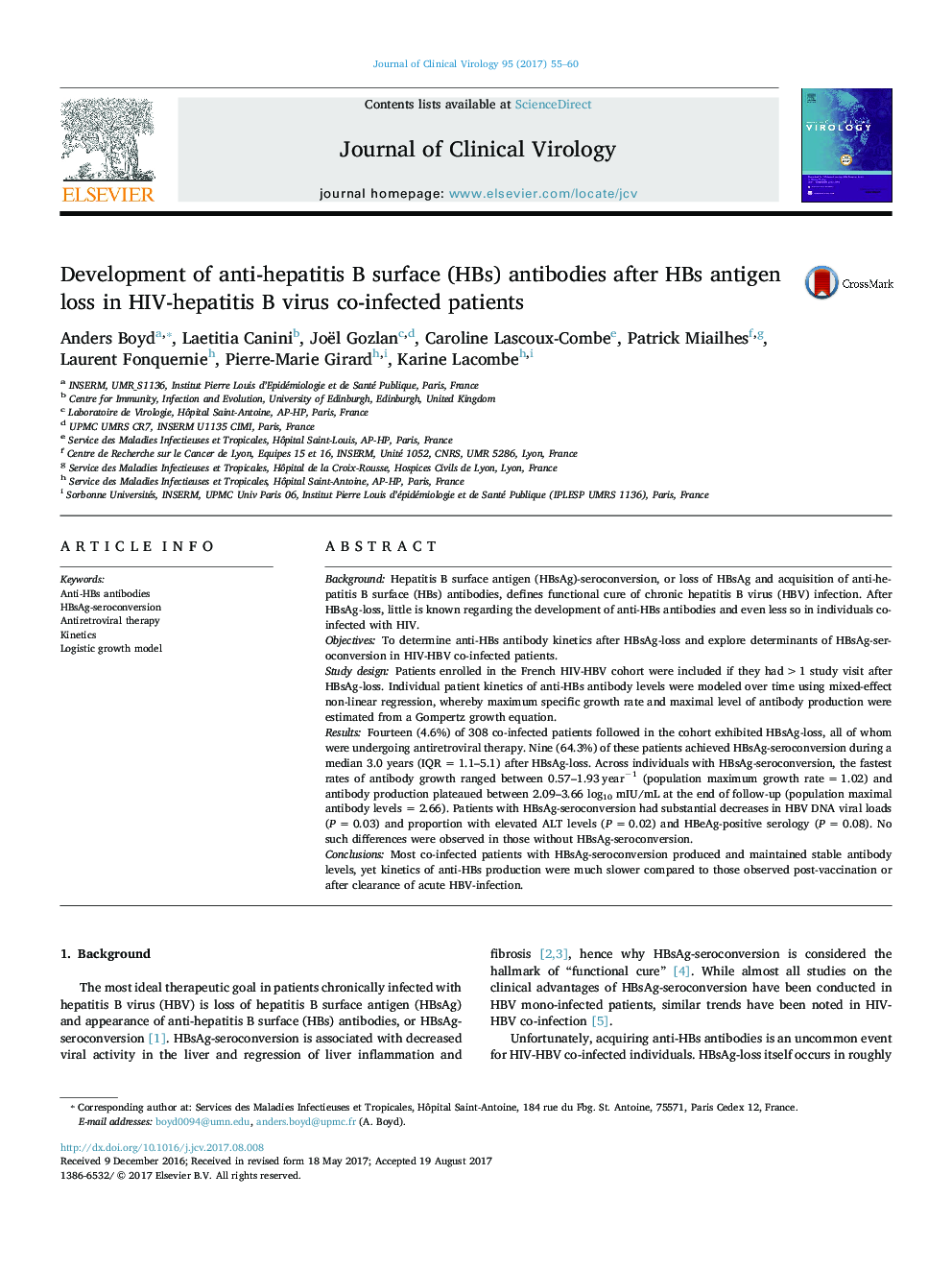| کد مقاله | کد نشریه | سال انتشار | مقاله انگلیسی | نسخه تمام متن |
|---|---|---|---|---|
| 5668113 | 1592331 | 2017 | 6 صفحه PDF | دانلود رایگان |

- Studies have yet to fully examine anti-HBs antibody development after HBsAg-loss.
- Nine HIV-HBV co-infected patients with HBsAg-loss and extensive viral suppression were prospectively followed.
- Rate of maximum antibody growth and level of maximum antibody development were much lower compared to post-vaccination or acute HBV.
- The modeling strategy presented herein could be useful for clinical trials evaluating novel agents and observational cohorts of HBV-infected patients.
BackgroundHepatitis B surface antigen (HBsAg)-seroconversion, or loss of HBsAg and acquisition of anti-hepatitis B surface (HBs) antibodies, defines functional cure of chronic hepatitis B virus (HBV) infection. After HBsAg-loss, little is known regarding the development of anti-HBs antibodies and even less so in individuals co-infected with HIV.ObjectivesTo determine anti-HBs antibody kinetics after HBsAg-loss and explore determinants of HBsAg-seroconversion in HIV-HBV co-infected patients.Study designPatients enrolled in the French HIV-HBV cohort were included if they had >1 study visit after HBsAg-loss. Individual patient kinetics of anti-HBs antibody levels were modeled over time using mixed-effect non-linear regression, whereby maximum specific growth rate and maximal level of antibody production were estimated from a Gompertz growth equation.ResultsFourteen (4.6%) of 308 co-infected patients followed in the cohort exhibited HBsAg-loss, all of whom were undergoing antiretroviral therapy. Nine (64.3%) of these patients achieved HBsAg-seroconversion during a median 3.0 years (IQR = 1.1-5.1) after HBsAg-loss. Across individuals with HBsAg-seroconversion, the fastest rates of antibody growth ranged between 0.57-1.93 yearâ1 (population maximum growth rate = 1.02) and antibody production plateaued between 2.09-3.66 log10 mIU/mL at the end of follow-up (population maximal antibody levels = 2.66). Patients with HBsAg-seroconversion had substantial decreases in HBV DNA viral loads (P = 0.03) and proportion with elevated ALT levels (P = 0.02) and HBeAg-positive serology (P = 0.08). No such differences were observed in those without HBsAg-seroconversion.ConclusionsMost co-infected patients with HBsAg-seroconversion produced and maintained stable antibody levels, yet kinetics of anti-HBs production were much slower compared to those observed post-vaccination or after clearance of acute HBV-infection.
Journal: Journal of Clinical Virology - Volume 95, October 2017, Pages 55-60